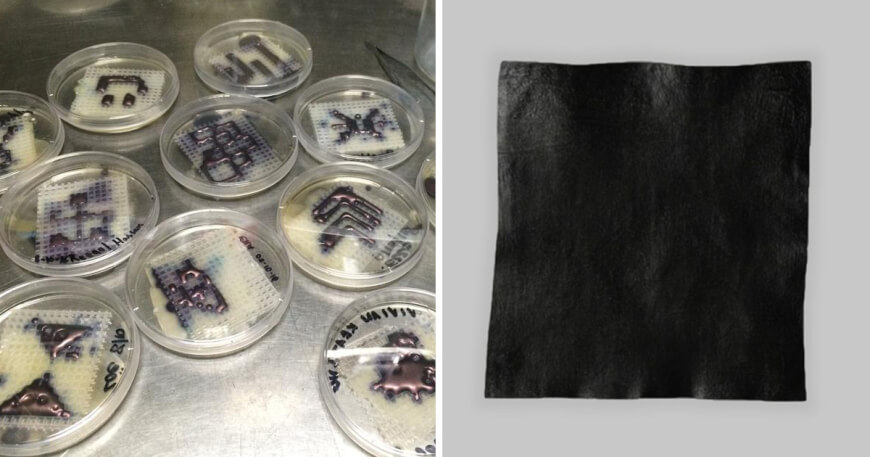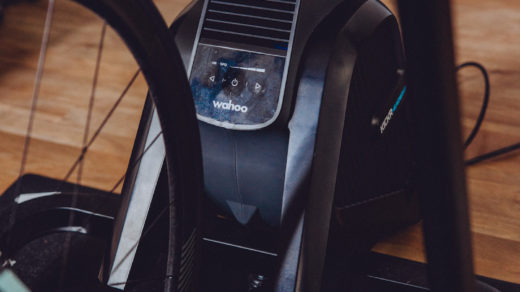Fast fashion is not only unsustainable but also means an unbearable burden to the planet. The situation is ripe for change. Could lab-grown leather and other novel ways of synthetic garment production, biofashion or digital clothing show the way to an alternative future for the apparel industry? Is there a chance of improving our attitude towards clothing items by adding more value, new functionality?
From Burda to the unsustainable downward spiral of fast fashion
When our grandmothers in the 1950s wanted to dress according to the latest trend, they bought the Burda Magazine alongside some fabric and used the family sewing machine to create their own couture. The scarcity of financial means urged them to create lasting pieces, two seasonal cycles of fashion allowed them to stylishly wear their beloved pieces for years.
Now, without longing for past decades, we have to ask: when was the last time you sewed a button on your shirt or brought your shoes to the shoe repairman? The Guardian’s Lucy Siegle recounted a story about how a fashion industry commentator once watched in horror as a customer emerged with six or seven brown paper bags full of clothes from a fast fashion store. The young woman walked through the busy street in the rain when one of her bags broke – and she just walked away without even thinking about bending down for the clothes. So what happened between Burda and street-littering carelessness?

Fast fashion and the outskirts of Dhaka
By now, instead of the two seasonal cycles, there are even 50-100 micro-seasons; it has been estimated that there are 20 new garments manufactured per person each year, and we are buying 60 percent more than we were in 2000. The longevity of our garments has shrunk at an astonishing rate: compared to wearing clothes for decades, clothes are worn at most for 3.3 years before being discarded.
Researchers estimated that five percent of global greenhouse gas emissions come from the apparel sector – in other words, the creation of clothing results in environmental pollution equaling that of all of Russia. Parallel to that phenomenon, huge amounts of textile waste are generated at every level of production and consumption. Hundreds of tons of garments are set on fire in the outskirts of the low-wage textile hotspot, Dhaka, where the pollution level is beyond comprehension. At the same time, fast fashion retailers even accelerate the processes by offering easily expendable, low-quality garments – and by marketing strategies making purchasing the latest items quasi-addictive.

Alternative production: lab-grown leather, orange fiber, and mushroom-based bag
It is crystal clear: we are not paying for fast fashion with money – we are trading our planet’s future for cheap clothing.
Some players such as fashion icons Stella McCartney or Vivienne Westwood have already recognised the scale of the problem, and a handful of companies are experimenting with alternative means of production. That means they are trying to avoid the use of traditional materials, such as leather or cotton, and replace them with lab-grown, synthetic materials created through bioprinting, for example.
The New Jersey-based company, Modern Meadow, grows animal skin in a lab as bioprinted cell culture. Recently, the biotechnology start-up, Bolt Threads debuted a handbag made from its proprietary vegan material, Mylo. Components are made with mycelium—mushroom root systems that the company grows into 3D structures on a bed of corn stalks before compressing the mass into durable, animal-free leather.
The venture also partnered with Stella McCartney to design a modern take on the shift dress made of synthetic spider silk from proteins produced through fermentation using yeast, water, and sugar. The Italian start-up, Orange Fiber delivers the first yarn made of by-products of citrus juice with the help of nanotechnology.

Sensor-based fashion and digital clothing – not yet gaining momentum
The past few years have produced a number of ventures aiming for a more sustainable fashion industry by offering ‘added value’. We will list some of the most interesting examples here, but also have to note that these have not become mainstream, nor seem to have gained real momentum – so far.
“Engineers at the University of British Columbia created a flexible waterproof battery that is durable enough to undergo multiple wash cycles. The battery is so pliant that it can still function when stretched to double its original length. It’s made of low-cost materials, making it potentially highly suited for wearable health monitoring technology, such as items of clothing, patches, or watches that monitor vital signs.” – Medgadget reported.
Researchers at the University of Helsinki in Finland created a smart jumpsuit that can track toddler movements using a series of motion sensors. The suit required substantial breakthroughs in machine learning to train computer algorithms to recognize specific movements that point to possible underlying medical conditions.
Tommy Hilfiger has released a range of “smart clothing” containing inbuilt Bluetooth chips that allow the item’s movements to be tracked and users to be rewarded for wearing them. In 2014, Ralph Lauren debuted its smart shirt measuring heart rate and breathing during the US Open.
In May 2015, Google started collaborating with Levi’s to create fibretronic materials. The idea was to produce a newly designed conductive fabric and turn it into “smart jeans” to allow the garment to send data and power without the need for wires. Since then, engineers of Google and Levi’s have changed their minds and created a “smart jacket” instead of the iconic trousers. The jacket has touch sensible material: users can tap, swipe or hold on the left cuff of the sleeve to fulfill simple tasks like changing music tracks, blocking or answering calls or accessing navigation information.
These garments possess useful functionalities. For example, technologists at the University of Minnesota have designed real-life gloves that tingle when they sense nearby objects. They use an ultrasonic sensor to detect what firefighters cannot, allowing them to “see” through the smoke. Or, material scientist Jun Kamei has created Amphibio, a 3D-printed garment that functions as a giant gill, allowing the wearer to pull oxygen from an aqueous environment and breathe it. He is already a giant leap ahead of us – saving humanity from rising sea levels as a consequence of global warming. Mind-blowing, isn’t it? Let’s see what we have in healthcare!

Healthcare and fashion interwoven: the appearance of digital clothing
The fitness and wearables market seems to have already found the niche area of digital clothing for itself. Sydney-based startup Wearable X’s Nadi X yoga pants come with built-in haptic vibrations that gently pulse at the hips, knees, and ankles to encourage you to move and/or hold positions. French fashion tech company, Spinali’s UV Protect swimsuit collection is equipped with a removable medallion-style waterproof sensor that aims to stop you from staying too long in the sun. OMSignal’s smart bra, the OMbra, records distances run, breathing rates and heart rate, and even tells you when you’ve recovered enough to head back to the gym. Sensoria’s second-gen connected socks want you to have the best run possible by offering data on your speed, distance, time as well as style.
All the while, Owlet Care thinks about the smallest and cutest creatures. It offers smart socks using pulse oximetry to measure your baby’s heart rate and oxygen levels while they sleep. Using the app, you can view your baby’s heart rate and oxygen levels in real-time.
In sports medicine, several companies offer digitised garments for improving performance. For example, HexoSkin developed a range of items with sensors woven into it that measures heart rate, breathing, counts steps taken, pace, and calories burned. The garments can be washed in a standard machine, and offer health monitoring, stress monitoring, UV protection and support for performance training via apps. As weird as it is to write about a running top coming with Bluetooth connectivity, this might be something that will become mainstream one day.

The swarm of already existing combinations of digital technologies and fashion items shows the massive potential in the marriage of the two fields. Although healthcare professionals might be averse to fashion walking into medicine, if people bought digital health technologies more easily because they is packaged as a beautiful garment, why not give this a chance?
On the other hand, digital clothing might bring new directions into fashion, and perhaps it would slow down the fast fashion industry a little bit – as people might not throw out clothes with technology so carelessly. We cross our fingers for that!
|
At The Medical Futurist, we are building a community for making a bold vision about the future of healthcare reality today. If you’d like to support this mission, we invite you to join The Medical Futurist Patreon Community. A community of empowered patients, future-oriented healthcare professionals, concerned health policymakers, sensible health tech developers, and enthusiastic medical students. If there were ever a time to join us, it is now. Every contribution, however big or small, powers our research and sustains our future. Click here to support The Medical Futurist from as little as $3 – it only takes a minute. Thank you. |
The post Digital Clothing, Biofashion And Smart Outfits – The Future Of Fashion appeared first on The Medical Futurist.


